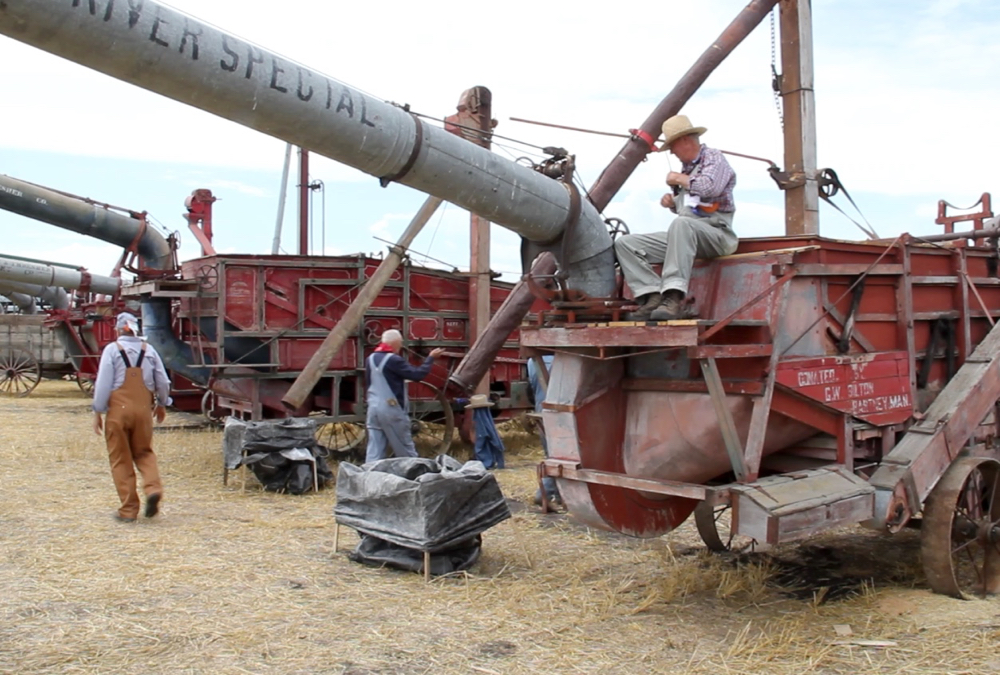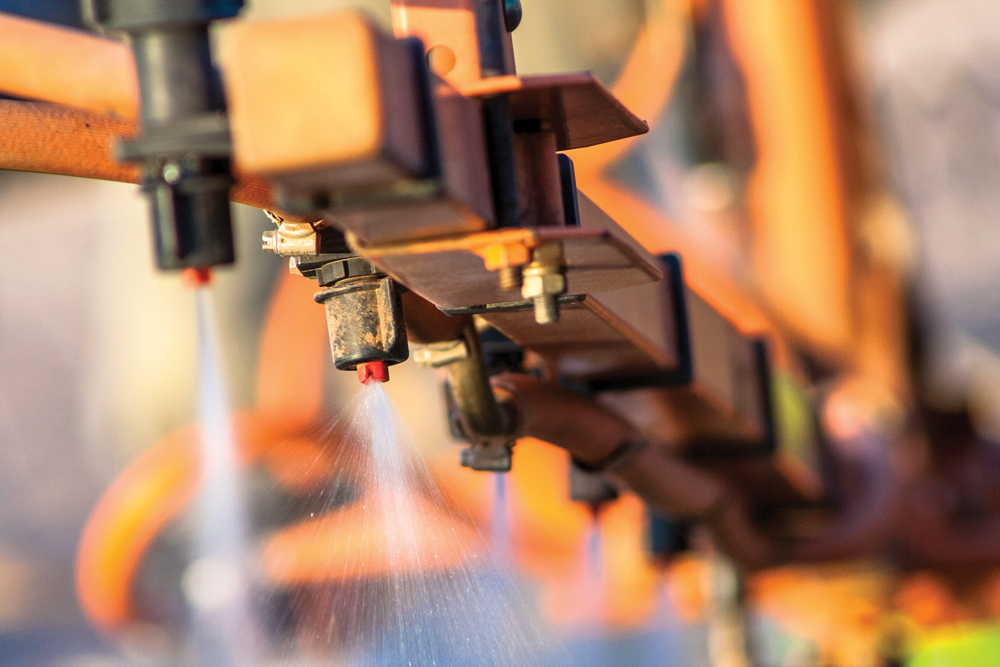Recently the Manitoba Agricultural Museum was the recipient of a collection of agricultural photos collected over the years. The donor of the photos wishes to remain anonymous at this time.
Unfortunately the photographs had no further information with them. Many photos taken of pioneer agricultural activities have information written on the photos containing such information as people’s names, the name of the owner of the farm or outfit and/or the location of the photo. However, the photo here has no information with it which is a pity as the photo appears to have been taken in the 1890s.
Read Also

Reaction rolls in on Health Canada dicamba restriction proposal
Spray expert says proposed dicamba rule change would ban ‘over the top’ use of the herbicide
The threshing machine is a Sawyer Massey Peerless and the steam engine being used to drive the thresher is believed to be a Sawyer Massey return flue portable steam engine. The word Peerless painted on the side of the threshing machine can just be made out on the photograph.
There are a number of clues which point the museum towards believing the photo was taken in the 1890s. The women’s dresses and hats appear to be of the late-Victorian or early-Edwardian age but then this sort of clothing was worn up to the First World War. However, the fact that the ladies in the photo wore their good dresses and hats to the field points to the novelty of the photo. After 1900, photos became much more common and the women would not have risked their good clothes in the field in order for the ladies to appear in a photo of a threshing crew.
A further clue is the threshing machine. Peerless threshers began to be built by Sawyer Massey in 1885. This Peerless does not appear to have a feeder on the machine but rather the machine is hand fed. Sheaves were forked onto a table immediately in front of a cylinder where a man then cut the band on the sheaf and fed the sheaf into the cylinder, taking care to feed the sheaf evenly across the face of the cylinder. There was a platform provided for the man or men feeding the cylinder to stand on as the cylinder on a separator typically could not be reached by hand from the ground.
Obviously this type of feed resulted in more manpower being needed in the threshing process, so by 1900 mechanical feeders were being offered for separators. Basically these devices were a chain conveyor table about six to eight feet long with a set of band cutters fitted to the end of the feeder immediately before the sheaf was fed into the cylinder. Depending on the feeder there may also have been mechanical devices fitted that spread the sheaf out evenly to be fed into the cylinder. Feeders were also fitted with governors that sensed when the cylinder was slowing down and so would slow the chain conveyor to prevent the cylinder from being overloaded and plugging. A band cutter was needed as any sheaf that was uncut would present the cylinder with a wad that the cylinder was not able to handle. With a mechanical feeder it was important to fork a sheaf onto the conveyor head first and never sideways.
Further clues are the presence of a straw carrier rather than a blower at the rear of the thresher. The first threshing machines simply dumped the straw out the back of the machine where someone had to fork the straw away. Carriers were then developed which were, again, chain conveyors. Carriers were capable of being elevated but, usually, were not capable of being swung from side to side. At some point the straw pile grew so big that there was no more room for the carrier to dump straw so the threshing machine had to be repositioned.
Some outfits had a man on the pile to fork away straw so reducing the need to reposition. Other outfits had a man and a team of horses “bucking” away straw which meant a wooden “push dozer” type of device pushed by a team of horses was used to move straw away from the carrier. By the mid-1890s, wind stackers for threshing machines were developed and rapidly took over from carriers as a wind stacker could be fitted with an extendable blower tube and be swung from side to side which meant a much bigger straw pile could be built before the separator needed to be moved. Generally wind blowers weighed less than a straw carrier and did not require much more power to run than a carrier. Sawyer Massey began to offer wind stackers on its separators in 1896 when it obtained a licence to build a wind stacker from the Indiana Manufacturing Company which held the patent rights on the device at the time.
A final clue is the presence of a low bagger on the separator. It can be seen between the two men standing on the ground beside the separator to the right of the women. There is a bag attached to one nozzle of the device. Sawyer Massey did offer as an option a “Case Pattern Bagger and Tallier” for its separators and the device in the photo resembles the Case Pattern device found in a Sawyer Massey catalogue.
This device took clean grain off the sieves, elevated it about three feet and the grain was then fed into a tallier which measured the bushels of grain the separator was putting out. The grain was then dropped into a grain bag. The output end of the bagger was fitted with a divider and two nozzles dropping grain into bags. When one bag was full, the divider then diverted grain into the other bag while the full bag was removed and empty bag fitted to this nozzle. Obviously in a good crop, the men operating the bagger were kept busy particularly when one also considers the baggers also had to tie the mouth of the bag shut and stack the bags. By 1900, high grain elevators were being fitted to separators as this device could load grain into wagons or directly into a granary if the farmer wanted to do so.
While it is entirely possible that this photo was taken after 1900, the details in the photo point towards it being taken sometime around 1895.
It is interesting to note the bush behind the outfit. Generally in early Prairie agricultural photos, there is a noticeable lack of trees or bush in the background. Prairie fires burnt over the Prairies on a regular enough basis that trees or shrubbery of any sort found it difficult to become established. When the photo was first examined, the crop being threshed was a puzzle as some of the straw seemed coarse enough to be standing on its own. It was then realized that there is some shrubbery in between the photographer and the straw pile and the branches of these bushes are what we are looking at when wondering why straw is standing upon its own.
The Manitoba Agricultural Museum is open year round and operates a website which can provide visitors with information on the museum and the reunion including location and hours of operation.















